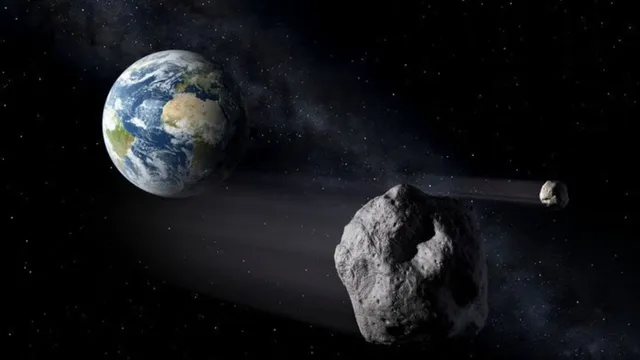- By Shivangi Sharma
- Thu, 21 Nov 2024 05:29 PM (IST)
- Source:JND
Asteroid 2024 PT5, often referred to as a ‘mini moon’ or ‘second moon’, made headlines after being spotted on August 7 by a NASA-supported asteroid detection system. This bus-sized asteroid, which briefly became a temporary satellite of Earth, was captured by our planet's gravity from September 29 to November 25. As it completes its close approach to Earth, the asteroid is set to vanish from view until its return in 2055.
PT5 originating from the Arjuna asteroid belt, temporarily entered Earth's gravitational influence on September 29. Though it was too small and dim to be seen with the naked eye, its rare journey captured the interest of astronomers.
NASA clarified that it is not a true ‘mini moon’ since it won't be fully captured by Earth's gravity. The asteroid's closest approach was about 3.7 million kilometres, and it will pass near Earth again in January 2025, providing scientists with a unique opportunity to study near-Earth objects.
ALSO READ: World’s Best Cities For 2025 List Revealed: Check Where Mumbai And Delhi Rank
What’s The Last Date You Can Watch The ‘Mini Moon’?
Asteroid 2024 PT5, discovered by the ATLAS project in August 2024, was temporarily captured by Earth's gravity for just under two months. Although it was called a ‘mini-moon’, it didn't complete a full orbit around Earth. Instead, it followed a ‘temporarily captured flyby’, circling about 25 per cent of Earth's surface before continuing its journey through the solar system. It is set to exit Earth's orbit on November 25.
ALSO READ: Thai Woman Sentenced To Death For Poisoning 14 Friends With Cyanide
According to The Metro, the mini-moon is currently 3,760,000 km from Earth, which is relatively close in space terms. NASA scientists believe its motion indicates it is of natural origin, not a result of human activity. This event provides valuable insights into near-Earth objects and enhances detection techniques.
Earth has a temporary, tiny companion.
— NASA JPL (@NASAJPL) October 2, 2024
While not quite a "mini moon," since it will never be captured by Earth's gravity, Asteroid 2024 PT5 does have a similar orbit as our planet and will linger in our vicinity for a few months. https://t.co/5fB0Mvf6nq pic.twitter.com/k6HW3GuZZn
The US Sun notes that the next encounter with the mini-moon will be in 2055, making it a unique opportunity for scientific observation.

